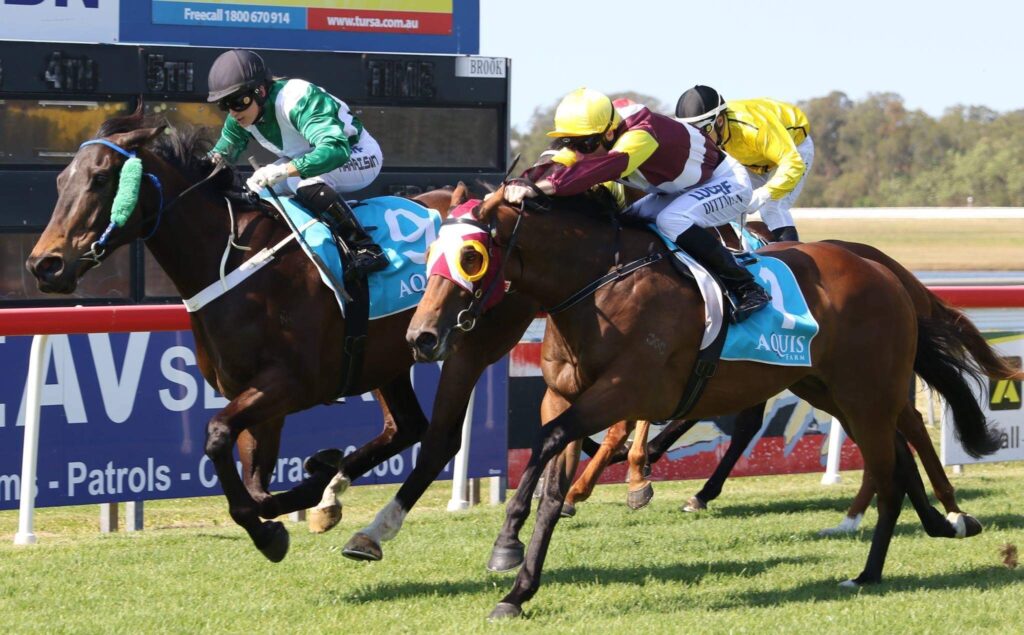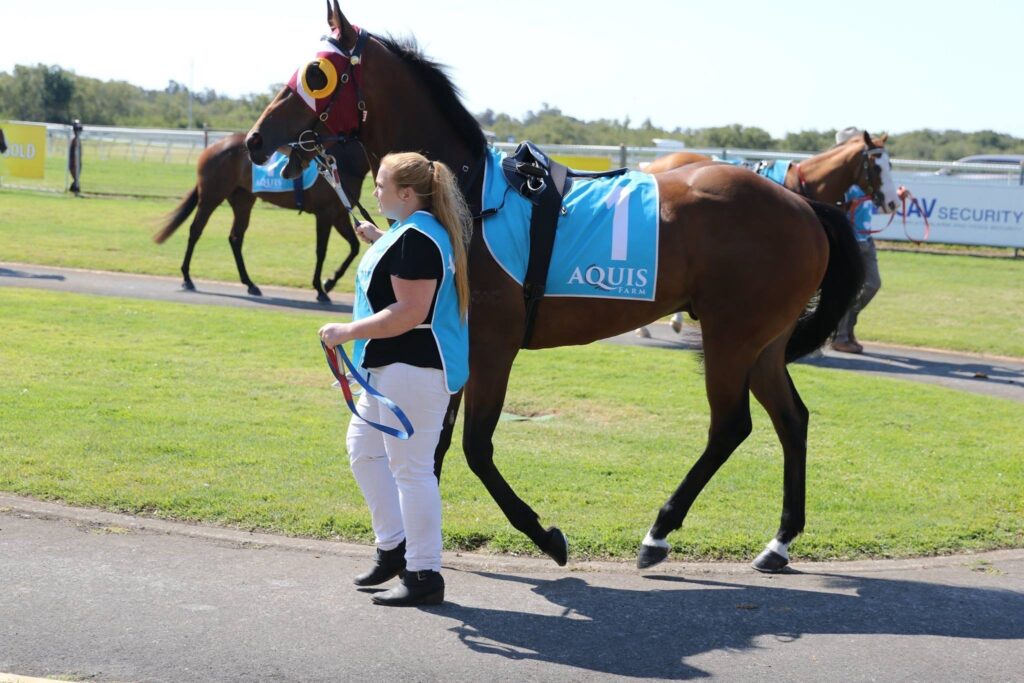Thoroughbred, to mean a horse, was first used around the turn of the 19th Century.

A good quality thoroughbred is very dependent on the eye of the beholder. The general rule of thumb is, they have a well-chiseled head on a long neck, high withers, a deep chest, a short back, good depth hind quarters, a lean body, and long legs.
Did you know?
In Australia, horse racing is the third biggest sport in the Country, behind Australian Rules Football and Rugby League. Did you know once a racehorse is retired from racing it is called an “off the track thoroughbred’ (OTTB), an OTTB is registered with the Jockey Club and retired from racing or training due to injury, lack of talent or old age.
Most racehorses can start their career at just two years old – and some of them retire by the age of four, although many can go on racing much longer, at least until 10 or older.

Another question we are asked is how old do OTTB’s live to be?
The average lifespan of racehorses is 25 – 28 years, which is the same for most horses.
A little bit of history:
Only seven horses came over on the first fleet, these horses were used for breeding. This breeding allowed Australia to hold their first recorded thoroughbred race meet in the 1810. In 1840 the Australian Racing Committee was formed; this committee was soon known as the Australian Jockey Club. In 1861 we held our first Melbourne Cup.
So how did our OTTB’s become racehorses? Please note this is a general overview, each trainer has their own beliefs and training programs.
- Horses purchased from the yearling sales are normally ‘broken in’ straight after the sales. This is educating the horse to accept the bridle, saddle and the rider.
- After around four – six weeks of breaking in the horses go to the training stable for a few weeks of education. They work with other horses, gallop on the track and might also have a go at the barriers.
- After this the horse is turned out to the paddock where they continue to grow and further mature.
- Depending on the horse, it’s mental and physical maturity some horses can be trained for a 2YO campaign.
- If a horse is not as advanced as the above or if they were purchased as a long-distance staying type of horse, it may take longer to get on the track. This means they will make it on the track as a 3YO or 4YO.
- When a horse is in training it will be in full work for about 12 weeks before it is ready for jump outs, trials, or races.
- A hard decision for trainers and owners at some stage during the racehorses career, is retirement, this could be due to old age, too slow, they don’t want to race or injury. Most trainers and owners take responsibility to engage a re-training and/or re-homing service but unfortunately not all.

OTTB’s if retired without injuries can move onto careers in equestrian competitions like dressage, jumping, cross country or even polo. For the injured OTTB’s it is not always that easy, these guys need more patience, care, money, and training. Allowing these injured OTTB’s the time they need to heal and mentally mend, it can be a slow process but worth every step in helping them on their re-education journey to help the horse find their forever home. There are a number of new careers for our non-competition OTTB’s, they can be family hacks, therapy horses ie equine or physical therapy, or Riding for the Disabled to name a few.
Life with Horses are so proud and passionate to be able to provide these amazing gentle giants a chance to find their forever home.
